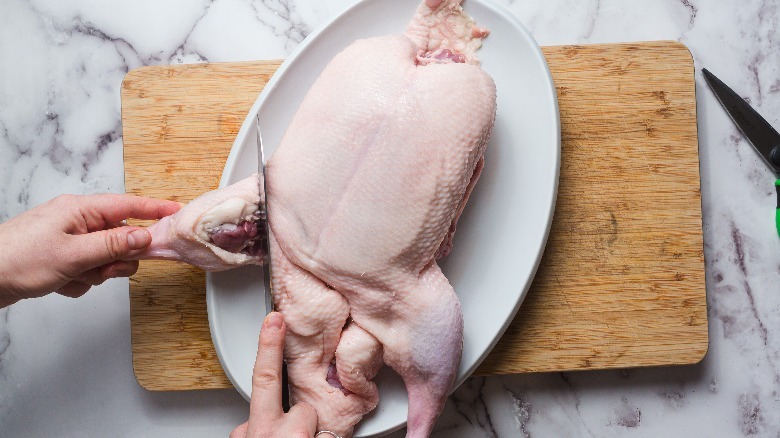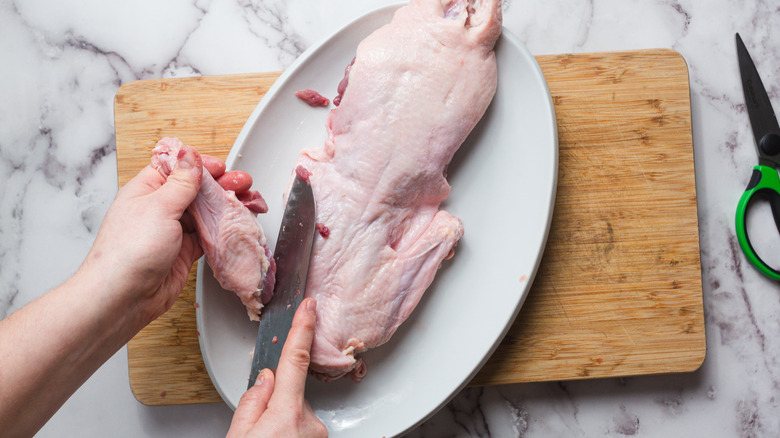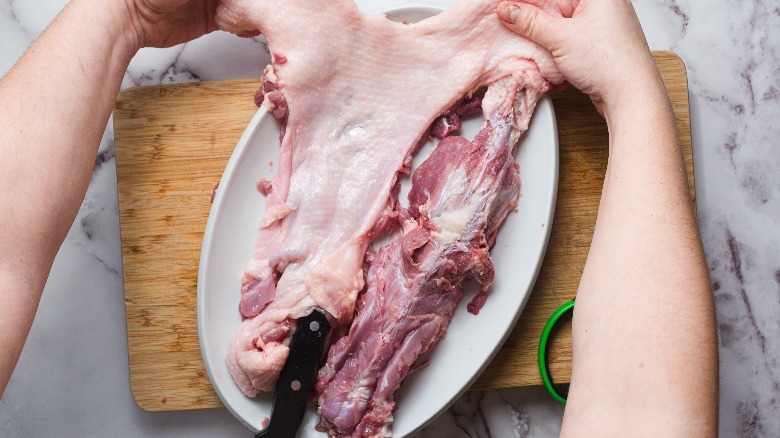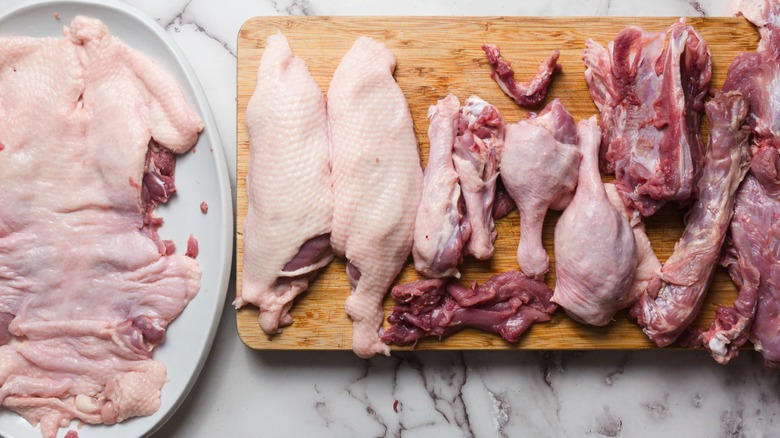How To Break Down A Whole Duck
Breaking down a whole duck may seem daunting, but it's a valuable skill for home cooks looking to take their cooking repertoire just a bit further. There's something so satisfying about starting with a whole animal and learning how to slowly and methodically cut it into usable parts, treating it with respect, and ensuring none of it gets wasted. Duck is one game meat that may seem intimidating but is actually incredibly easy to learn how to break into parts. And the best part is, it's likely the most economical way to enjoy duck dishes!
Whole ducks are typically sold frozen or fresh in select butcheries, farmer's markets, and Asian grocery stores. As a professional recipe developer and food blogger for At the Immigrant's Table, who has lived in Quebec, Canada for the last 10 years, I have truly seen the gamut of how to cook duck. French Canadians love their duck dishes, and you can find duck raised locally and sold in many different stores. They're particularly popular during holiday seasons and special occasions, such as around New Year's Eve, in the spring, and during maple harvest season.
If you're a curious home cook, learning to break down a duck opens up a world of possibilities. Our easy-to-follow guide allows you to make the most of the duck — whether you're planning to prepare Peking duck, confit the legs, or render the fat for future cooking — and ensures you can confidently tackle this task in your own kitchen.
Equipment needed
For the task of breaking down a whole duck, you'll need a sharp chef's knife, poultry shears, and a cutting board.
Prep the duck
Begin by removing the giblets from the duck's cavity.
Pat the duck dry inside and out with paper towels to ensure better handling and cooking results.
Remove the wing tips
If your duck still has its wing tips attached, cut through the joint connecting the wing tip to the wing. Set these aside for stock rather than discarding them, as they can add flavor to broths.
Remove the legs
To remove the legs, pull each leg away from the body. Cut through the skin between the leg and body.
Pop the thigh joint out of its socket, then cut through the joint to separate the leg from the body. Repeat this process for the other leg. Keep the skin intact on the legs for crispy results when cooking.
Separate the breast from the carcass
Cut along the ribcage on both sides, separating the front of the duck from the back.
Stand the duck upright on its neck end for easier maneuvering. You'll need to use a sawing and cracking motion to fully open up the duck.
Cut along the breastbone on one side, following the rib cage, then continue cutting to separate the meat from the carcass.
Repeat on the other side. Trim excess skin and fat from the breasts as desired, but remember that keeping some intact helps achieve a crispy texture when cooking. Pouring some boiling water over the skin before cooking it will help in that, too. Remove any leftover meat from the ribcage to avoid waste and set it aside to use in a stew, or simply fry it in a pan with onions.
Remove the wings
Cut off the wings by cutting around the joint with a knife, then break them at the joints similarly to how you separated the legs. You can use the wings anywhere you'd use duck legs, though they cook faster.
Remove the wishbone
Locate the wishbone at the front of the breast. Carefully cut around it and pull it out.
Remove the remaining skin
Remove as much of the remaining skin as possible using the chef's knife and shears.
You will need to pull at the skin in one direction, and then cut with the knife at the base to help it separate.
Cut around any bones you come across. Reserve this skin for rendering duck fat.
What to make with duck and its parts
Congratulations, you've now broken down a whole duck! Your duck is now fully cut into pieces and ready for various cooking preparations. We recommend that you reserve the carcass, giblets, wishbone, and any additional meat trimmings for making stock.
From one duck, you can make several dishes using its two breasts, two legs, wings, and fat from the skin. For example, use duck fat the next time you make fried chicken. It's also amazing in roasted potatoes.
















